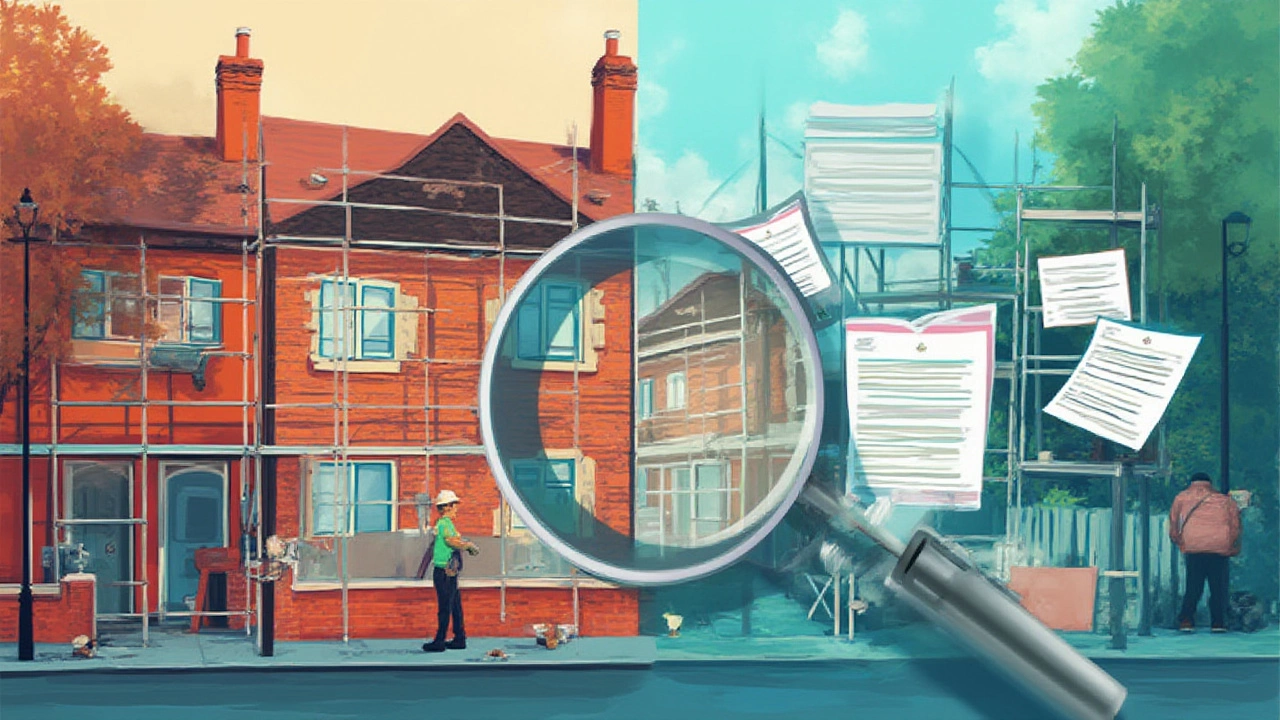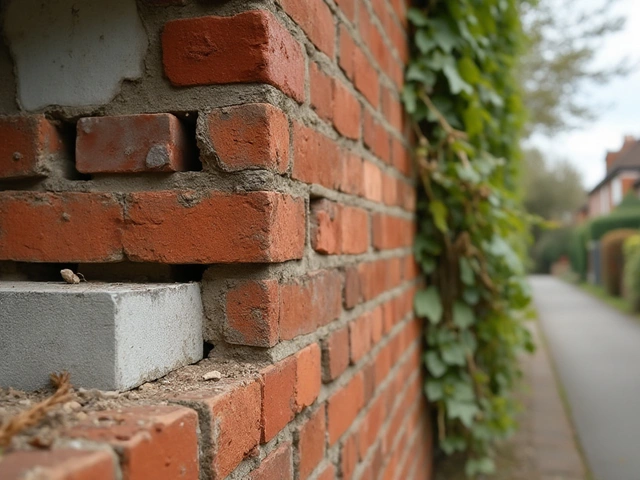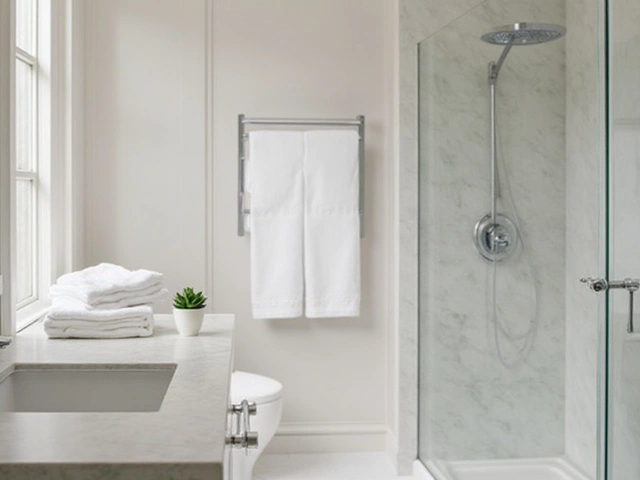No one expects their family to outgrow their home. Yet here we are—remote work set-ups permanently parked at the kitchen table, more shoes at the door (thanks, surprise pandemic babies!), and suddenly your living room feels like the wrong side of a game of Tetris. The answer? Build an extension. But before you grab the sledgehammer or ping your architect, let’s talk cash. The number of zeros involved in putting an extension on your house can seriously surprise you, and not in the way you hope. People search "how much does it cost to put an extension on a house" thousands of times every month for a reason: Square footage doesn’t come cheap. Just one new room? That’s more decisions, and bills, than you’d think. And plenty of folks make costly mistakes simply because they start building without seeing the full financial maze ahead. Let’s get real about every dollar involved—right down to the last paintbrush.
Breaking Down Typical House Extension Costs in 2025
Prices for home extensions aren’t static; they’re ballooning right alongside inflation and the rising price of pretty much everything in 2025. So, what’s the bill these days? National averages for a standard single-storey extension in the US hover between $150 and $300 per square foot. You want 300 extra square feet? Expect to shell out around $45,000 to $90,000, depending on what you’re building and where your house sits. Double-storey additions bring the price up 50% to 75% more because of extra roofing, foundations, plumbing, and electrical work. But that’s just a starting line.
Take California as an example. Because of stricter energy codes and sky-high demand, you’re likely facing $250 to $400 per square foot. Compare that to a place like Ohio, where materials and labor costs are lower—think $120 to $200 per square foot. Add in custom finishes, extra bathrooms, or a fancy kitchen, and you’re tacking on thousands more. Want an en suite bathroom? That’s easily another $25,000–$40,000 for high-end fixtures, with plumbing eats up a huge slice. Got a slope to deal with or tricky access for machinery? Contractors could add 10%–25% just to get the job done.
Hidden costs are real, too. Most folks forget about permit fees (usually $1,000–$3,000 depending on your town), engineering reports, soil tests, and insurance. Oh, and if your neighbors object, be ready for legal bills as well. It’s not unheard of for folks in metro areas to end up spending more than double their original estimate when all is said and done. A 2024 study by HomeAdvisor showed 60% of homeowners went over initial quotes on their additions, with common culprits being changes in plans and unexpected structural work.
Here’s a quick breakdown of average US extension costs for 2025, based on size and type:
| Extension Type | Average Cost (Per Sq Ft) | Total Cost (300 Sq Ft Example) |
|---|---|---|
| Single Storey, Basic | $150–$250 | $45,000–$75,000 |
| Single Storey with Kitchen/Bath | $180–$320 | $54,000–$96,000 |
| Double Storey / Second Floor | $220–$400 | $66,000–$120,000 |
| Custom High-End | $350–$500+ | $105,000–$150,000+ |
Of course, your project might not fit neatly in one of those boxes. Want an outdoor kitchen, fancy glass roof, or eco-friendly upgrades? The price will head north, fast. Point is, deciding what you want and what you truly need will steer your entire budget. Max, my golden retriever, would have picked a custom mudroom with heated flooring—if only dogs could pay for upgrades.
Major Factors That Influence Extension Pricing
Not every extension is created equal—some cost sky-high while others feel almost reasonable. The biggest price movers? Size, complexity, location, and finish level. A basic bump-out that gives your kitchen breathing room isn’t like turning your attic into a tricked-out guest suite, complete with en suite bath and custom cabinetry.
Materials are usually the biggest expense. In 2025, lumber is hardly a bargain, and if you’re choosing trendy options like steel, glass, or sustainable composite panels, your wallet feels it. Contractors won’t always tell you this up front, but the price can swing $30,000 or more just by choosing tile over vinyl plank, or marble instead of quartz. Then there’s labor. Unionized metro areas or spots with a labor shortage (think Austin, LA, New York) almost always mean bigger checks to your contractor. Out in the country, smaller teams and fewer building codes sometimes bring the bill down—unless you’re so remote it actually costs more to get anything delivered.
You've got to factor in the type of extension as well. Adding out, like building into your backyard, usually means more demolition, grading, and concrete. Adding up (think extra story) usually costs more in engineering and structural supports, but can save you money on land prep. Renovation pro tip: Always ask your contractor if you’re allowed to live at home during the build. If not, tack on temporary rental expenses too.
Permits are another hurdle. Some cities, like San Francisco or Seattle, make you jump through endless hoops with environmental and earthquake compliance. Your permit bill can top $10,000 just for paperwork and city reviews. Add in design and engineering fees—often 10–18% of the total cost of the build. Don’t even start on architects; the fancier your plans, the fancier the bill.
- house extension cost varies, but site access is a sneakily expensive bit. Cramped urban alleyways, tight driveways, or mature landscaping in the way? That’s time and equipment contractors have to plan around, and more hours to bill. Knocking down structural walls or dealing with foundations isn’t cheap, either.
- Historic homes need specialized work, often with premium materials to match the original. Historical commission sign-off can slow your build (and spend) by months.
- If you want all the latest smart-home tech, higher insulation standards, or solar roofs, don’t be surprised by a $20,000–$50,000 jump. The future isn’t cheap, but hey, the energy savings often pay off eventually.
- Every state is different: frost line depths, hurricane codes, wild fire risk, and snow-load requirements all jack up complexity—and bills—if you’re not watching.

Budgeting for the Hidden and Unexpected Costs
You’ve tallied up your contractor’s quote—but the surprises are lurking just beneath the paint and sheetrock. Underneath that perfectly normal old wall might be faulty wiring, asbestos, or a wildly out-of-date plumbing line. Fixing those is not a "nice to have," it’s a legal must. And each discovery averages an extra $2,500–$10,000 depending on your area and what exactly is wrong. That $80,000 project quickly noses toward $100,000 if there’s any major remedial work, and there usually is.
Think you can skip the boring bits like site surveys, insurance upgrades, or pest control? Your city inspector may disagree. Site prep (leveling, clearing out trees, improving drainage) is a huge but easily forgotten line item, often running $5,000–$15,000. Mandatory builder’s risk insurance for major projects saves your savings account if anything goes sideways, but expect another $1,800–$3,500 added onto your quote. Don’t forget the cost to have plans reviewed and stamped by structural engineers or city officials. In high-growth areas like Denver, this alone can run beyond $5,000.
Then there are the living costs during the build. Depending on the intrusion, you might find yourself renting an Airbnb for a few weeks (or months). That eats away at your budget fast—average US rental costs are $1,200 to $3,000 per month depending on your city. Max, my dog, definitely did not enjoy our temporary condo last year; turns out some neighbors don’t love a golden retriever howling for his own backyard.
And while it’s easy to dream about the layout and finishes, small details like window coverings, air conditioning re-routing, or fencing slip onto your bill at the last second. Not fun when you’re on your last dime. My tip? Pad your budget by 15–25% for unplanned expenses. This is advice folks rarely regret.
Ways to Save Money Without Cutting Corners
This might sound bleak, but you do have some control over what you spend. Smart planning means less sticker shock at signing—and more money left for fun things (maybe even a new dog toy stash for Max). Start with clear priorities: What do you need versus what would make it extra nice? Splitting needs from wants helps the budget stay honest. Use basic materials on the bulk of the project, and reserve higher-end finishes for smaller, statement areas—you don’t have to marble every inch to impress.
Shop around for your professionals. Three is the magic number—always get at least three solid, detailed quotes from contractors. These should outline ALL costs, including demolition, removal, permits, and clean-up. Never pick just the cheapest bid if it seems suspiciously low, but don’t assume the highest price equals the best quality, either. Check references, and look for reviews with specifics. Reliable tradespeople might already be booked months ahead, so plan accordingly—rushed hires lead to expensive regrets.
Ask your contractor if you can handle some work yourself. Things like painting, minor landscaping, or even installing a basic backsplash can save hundreds, if not thousands. Just don’t try electrical or major plumbing unless you love risk and code violations. Local supply chains can be your friend—using locally sourced brick, wood, or fixtures keeps shipping and delivery fees lower. And if you’re really pressed for cash, consider building in phases; finish the core structure now, and tackle high-end finishes later when your wallet recovers.
Some areas offer renovation grants, tax credits, or low-interest loans for green upgrades (solar panels, high-efficiency HVAC). Check with local and state agencies before you build. If you go this route, read the fine print to make sure you qualify and meet inspection requirements. And don’t forget to negotiate. Vendors, especially smaller businesses, may cut a better deal if you buy in bulk or pay up front. Never be shy about asking for a discount—worst case, they say no. Best case, you shave several thousand off your bill.
- This sounds obvious, but a detailed, signed contract is non-negotiable. Every phase, payment schedule, and spec needs to be inked to avoid expensive battles later on.
- Research your city’s rules. Some places allow "by right" extensions, meaning faster, less expensive approvals. Others require neighbors’ sign-off, environmental studies, or even public hearings.
- If your extension is for a rental unit, check with a tax pro—sometimes interest, depreciation, and other costs can be written off against rental income.

Real-Life Tales and Tips From Extension Veterans
Adding an extension often comes with chaos, but ask around and you’ll hear that the payoff is usually worth it. Mike from Chicago planned on a simple two-bedroom add-on, but thawed ground in spring revealed serious foundation issues. Final bill: $30,000 over what he expected, plus two extra months living in his in-laws’ basement. His hindsight? Spend on a detailed soil survey before you ever pick up a spade. Cindy in Dallas saved over $15,000 doing her own painting and eBay-scavenging vintage doors, but admits she got burned by a too-good-to-be-true "handyman" who vanished with a $4,000 deposit. Always use a licensed pro for core jobs and never pay more than one third up front.
Think about the impact on your home’s value, too. The right kind of extension can return 70%–100% of your investment in higher resale value—especially when it adds a bathroom or expands living space in a hot real estate market. But if you go super niche (like a luxury sauna suite or wine cellar no one wants), you might never get that cash back. Ask a local realtor what buyers in your area actually care about before splurging on unique upgrades.
Chatting with a couple in Portland who managed a modular extension revealed a surprising upside: prefab panels cut costs by 20% and shaved weeks off the schedule because there were no weather delays. If your city allows modular or semi-custom builds, definitely get a quote. But keep in mind, not every neighborhood or city is cool with modern designs, so check local zoning regs first.
If you can, try to be on-site daily. Small decisions (exact light placement, outlet location, tile alignment) are much easier to fix in person than through texts after the fact. Don’t be afraid to ask basic questions, and get changes agreed to in writing. Sure, contractors might roll their eyes, but your wallet will thank you later. If something looks off, speak up immediately—it’s your house, and your money.
Max’s favorite advice: Never finish the landscaping until all construction is 100% done. Too many stories end with trashed lawns and brand-new flowerbeds leveled by a concrete truck. Build first, plant second—it’s the kind of wisdom you only learn the hard way.





